"We have a huge vision for our software. Our dream is to change how people create music digitally": Modalics on their pizza-inspired, polyrhythmic beatmaking plugin
We sat down with the brains behind Beat Scholar, EON-Arp and the new Time-Oddity Chorus
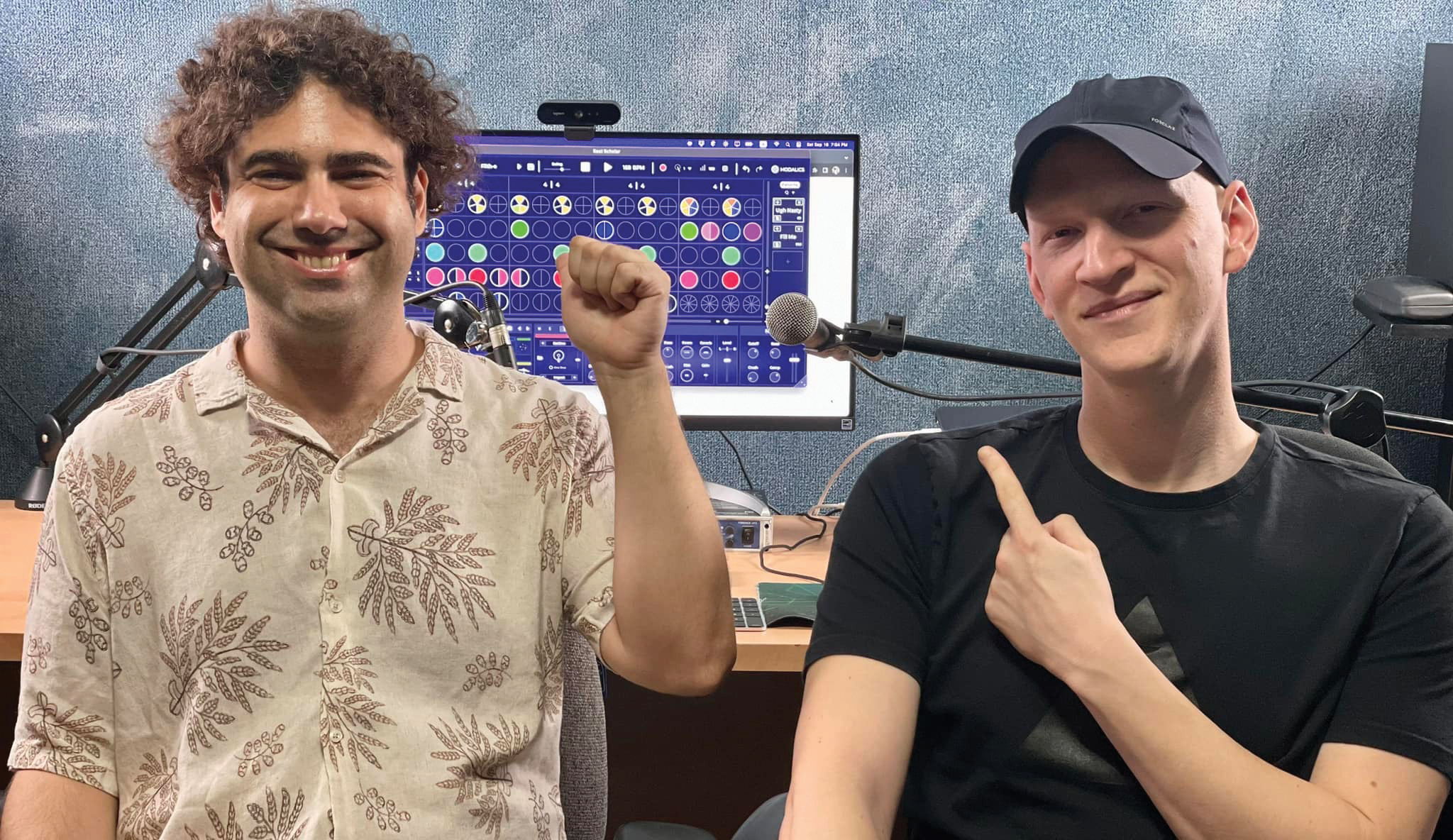
We’ve been fans of plugin developer Modalics since the quirky, pizza-inspired Beat Scholar first landed in 2022. Just over a year later, and the company’s product stable has ballooned with further excellence.
We sat down with Modalics' two co-founders to hear them explain their story…
Hi guys, let’s start with your latest release, Time Oddity Chorus. Can you talk us through what your new chorus plugin brings to the table?
Or: “Basically, it didn’t start as a chorus plugin, it started as a segment within another plugin. We developed EON-Arp which is an arpeggiator. It had a mini-synth with a fairly simple delay module. Eyal programmed this cool filter delay and we loved it. When we started getting into processing plugins, we wondered what we had already made that we like and could expand on.
“We ended up tweaking that delay so much and adding a bunch of features that it became this sort of modulation engine that can produce all kinds of different effects. We immediately were drawn to the whole chorus and phaser area. It’s a very gratifying and distinct effect. We identified that we had got somewhere cool, then Eyal added the LFO aspect. It sort of built itself because we were excited about the project and understood that this would be a very cool first release for this engine.
“We feel like we’ve managed to make something that’s pretty distinct in the character and voicing of the plugin. But also, I felt that most [chorus] plugins fall into the category of something that either models a specific device (like a Juno chorus, for example) or they’re modulation-station, feature-packed products. We fell into a spot in the middle. Our interface is very friendly, it feels like a pedal or a device, but the engine itself is pretty robust, and you can create a lot of variation in it.”
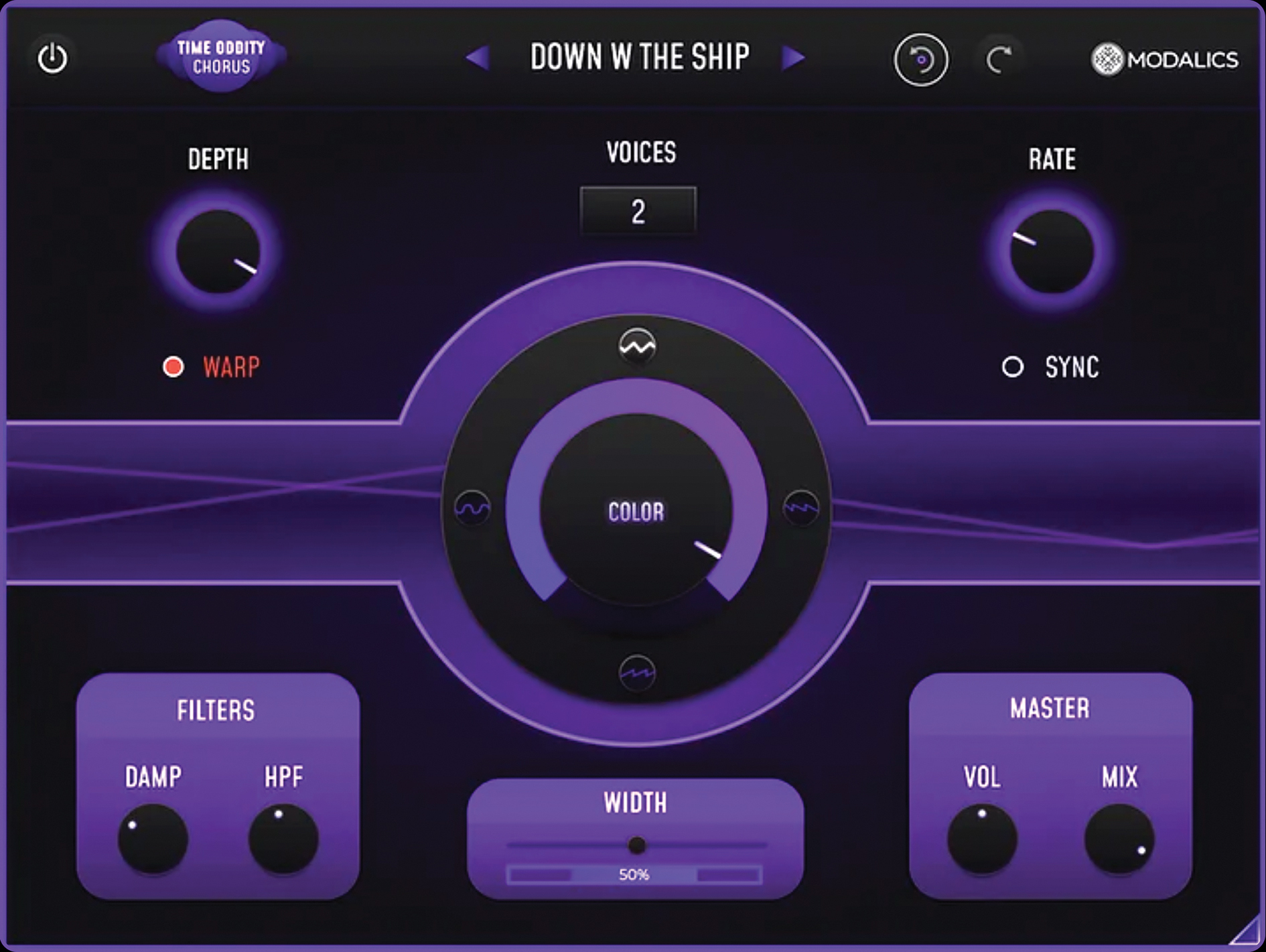
How long did the development process take, and was that a usual route?
Want all the hottest music and gear news, reviews, deals, features and more, direct to your inbox? Sign up here.
Eyal: “A lot of things that happen with us happen along the way. We develop things in a very fluid state. When we were developing MINDst Drums – one of our biggest releases to date – it had so many different effects in it, and we needed to build each one in turn. Every time we do that we think, ‘oh, this sounds good’ – we’ll then come back and develop it further. I would throw away more complex parameters once we hit on areas that just sounded good to our ears.
“We do this all the time at Modalics. But, with Time Oddity Chorus as a final product, the actual development time was around two weeks – because that engine foundation had been gradually worked on. It was very quick. We did a lot of work on the UI and the presentation, but the engine and infrastructure was already built. We could move very quickly.”
This momentum we’re able to create together is a big part of the reason why we decided to make an audio company. I don’t know many two-people teams who can produce plugins in a couple of weeks
Or: “We actually formed Modalics because we like to work at speed; our development cycles are very intense. While Eyal is working on the engine and developing prototypes for the processing and the back-end, I iterate on the branding, the parameter ranges and the front-end product work. We do that simultaneously. We constantly throw things back and forth.
“I do a bit of programming on the UX/UI side and Eyal also does product work and sound design. This momentum we’re able to create together is a big part of the reason why we decided to make an audio company. I don’t know many two-people teams who can produce plugins in a couple of weeks. What we release are high-end, commercial plugins with copy protection and everything else you’d expect from bigger manufacturers.”
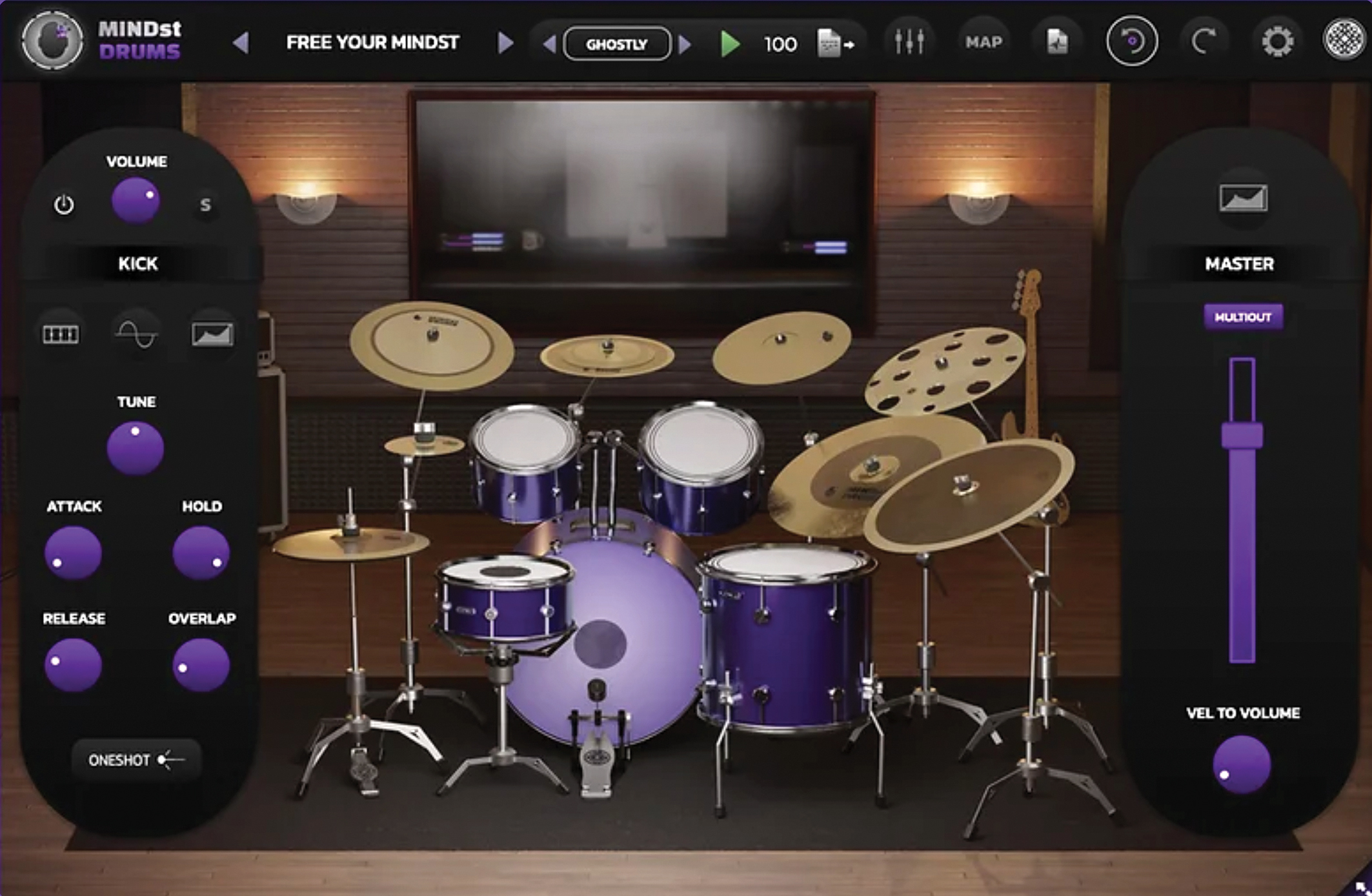
We first became aware of you with the amazing Beat Scholar, which completely shifted how we thought about pattern-forming and experimental beat-making. Was that an idea that predated Modalics or did that come to life after the formation of the company?
Or: “I think the general concept of finding a more comfortable way to make complex rhythms and measures is something Eyal and I have been dealing with for years because of our lives as musicians. We’ve been composing all kinds of music for most of the past decade. When we came to start the company, we knew our first product should signify what we’re about.
“A lot of products start with ‘pain points’ – so you think about what is bothering you in the creative process. Solving those issues is what we want to provide. Rhythm is such a key part in all kinds of music. That was our initial step; it was the company’s mission statement and our dream rhythm composer in one device. I think we hit the mark in the sense that it really kind of labelled us as the company that ‘does’ that kind of product.”

We loved the ‘beat-pizza’ UX idea. When thinking about the user experience side of plugin design, are you always conscious of the software being intuitive and enjoyable as well as useful?
Eyal: “Yeah, I think that’s something that we spend a lot of time thinking and talking about. It’s one of the more technically challenging aspects of what we’re doing for sure. I think UI and interaction in general is really core. We think about the computer as an instrument – I always have. It’s an extension of the piano, the guitar or whatever I’m using. What matters to me as a musician is not the sound as a result, but the interaction of how I’m getting the sound.
We have lots of ideas, there’s no shortage; but the main point is the product
“I think that’s what made me fall in love with the piano originally. That’s something we have a lot of discussion about. How someone might sit in front of the plugin. They start doing something and experiment with different things, that’s pretty important. Beat Scholar came from the concept of having a different grid on each step. That’s unique and I haven’t seen it happen before.
“We did that because we said that people don’t know what it’s like to change from a quintuplet to a triplet every step – they haven’t heard it and they’re hard to program. It’s really hard to do it in your DAW, you have to change the grid of the whole track just for the one beat. It’s a complicated process for you to do. We talk a lot about making these kinds of complex processes easier, and give people feedback on things immediately.
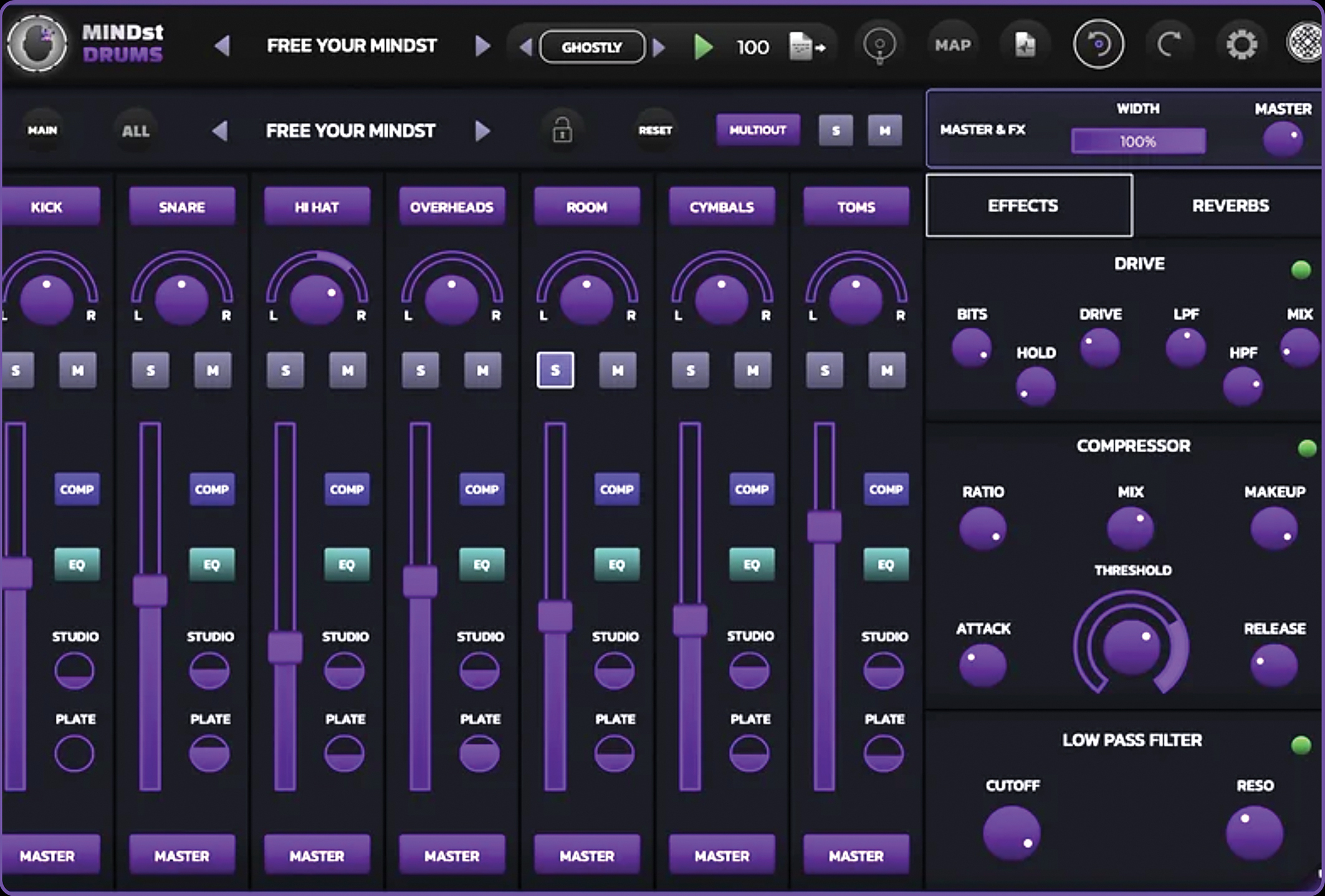
MINDst Drums really established that you’re not just in-the-box software developers, you’ve got a penchant for capturing incredible real-world sounds and framing them within an incredible versatile drum suite. What was your ambition with that product?
Or: “That was something we actually talked about before Modalics. Eyal and I started our path in plugin development at Waves. We made Bass Fingers and Bass Slapper. We did it in the same way that we work right now. We were less experienced but we approached it as a two-person development team. What we made was a very realistic bass instrument that modelled my playing. At that point, we realised that we should probably do the same thing for drums.
Our base point was that a sampler needs to be intelligent and needs to be able to reconstruct reality in a very convincing way without the user needing to go through a lot of learning
“Our base point was that a sampler needs to be intelligent and needs to be able to reconstruct reality in a very convincing way without the user needing to go through a lot of learning. The instrument needs to give a sense of reactivity. When you put your hands on the keys, you should be pleasantly surprised. It’s been brewing for a long time, so we felt that after doing several plugins that it was time for our flagship moment, that we were capable enough to produce this drum suite.
“We considered how many kits we should sample, eventually we settled on just one incredibly well-sampled kit with the most immense sample depth and variation that we were able to produce. We really wanted to explore what we can achieve with just one kit with our sample depth and reactive algorithms. Each drum was sampled from silence as well as from a previous resonance. Eyal brilliantly programmed a mechanism that keeps track of all that and triggers the correct samples according to the context.”
We really wanted to explore what we can achieve with just one kit with our sample depth and reactive algorithms
You’ve done a heck of a lot in a short time. How many different ideas for products do you have currently on the table, and do you work to a fixed release schedule?
Or: “We’ve released six products. Beat Scholar, Beat Scholar for iPad, EON-Arp, MINDst Drums, BitFuzzer and Time Oddity Chorus.”
Eyal: “We have a lot of ideas, they’re not in shortage at all. The main point of what we do is guaranteeing that something has value in terms of the final product, not just the idea. We’ll have a few big picture ideas (like MINDst Drums) that we’ve been talking about for a while. We have those in our conversations so we know at some point we’re going to make them.
“Then there are things that kind of develop organically. We’ll play for a while with certain bits of other plugins then at some point we have to make a practical decision. We might say ‘let’s take a few days to make this prototype happen’ or decide on a timeframe to make sampled instruments.
“So, we try to balance the practical with the creative. We don’t want to have development cycles that take many, many years. If we make a sequencer engine, then the nuts and bolts we’ll use again. The sequencer engine in Beat Scholar is the same engine that’s in EON-Arp.
“It becomes much easier to build other things this way. We were brainstorming on other sequencer stuff as we were building Beat Scholar. We mix the practical and creative side so we always have stuff to do and material to work with.”
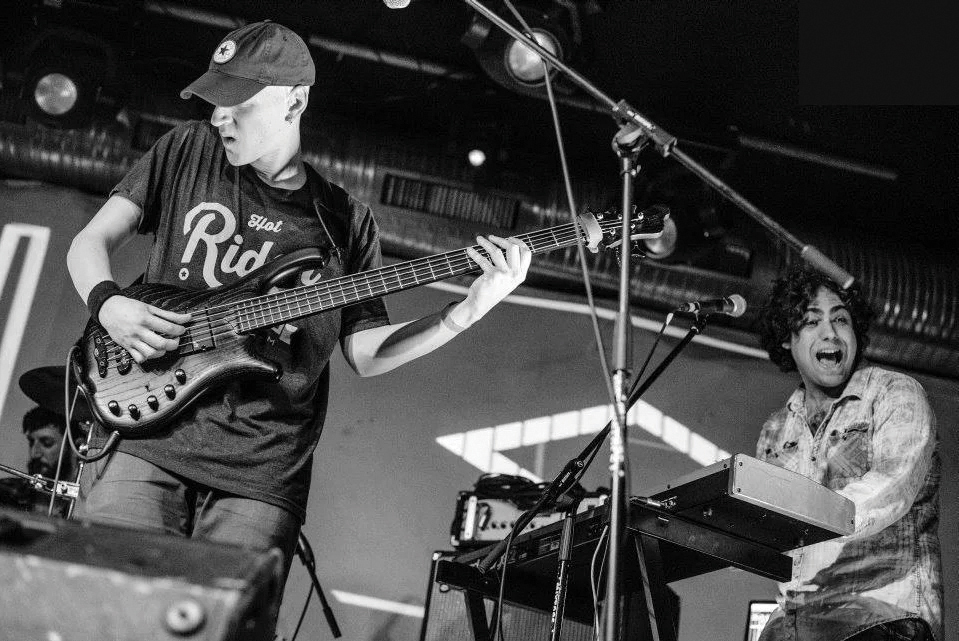
How many people work at Modalics currently, beyond yourselves?
Eyal: “Modalics is just the two of us, but we have freelancers who we hire for specific things. Nobody is working full-time. But there are people working on different segments. We have someone focused on customer support as well as marketing and video stuff and UI help.
“We have Mike Malyan making amazing videos for us, then we have people doing sample editing. So these amazing people are doing stuff for us but they’re not employees, they have other projects that they’re working on too. Some of them we’d love to get full-time, but they’re too busy!”
How much feedback do you get from the industry itself?
Or: “Everything we do goes through the filter of decades of experience between Eyal and I in different fields. From being instrumentalists to being producers. That’s an initial filter, but then the fact that all of our friends are musicians and producers means we’re kind of immersed in the industry from both sides. We’ve done enough development to have connections with other companies and market research. We also are fairly connected to the zeitgeist in terms of what’s going on right now, and who is releasing what.
Everything we do goes through the filter of decades of experience between Eyal and I in different fields
“A lot of start-ups (us included) don’t have the resources to spend months doing market research before deciding what to do. We have to be kind of adaptable and work very quickly. So, we combine our personal experience and don’t go way outside our own sphere. If it sounds to us like a good idea and we check it with some artists, then we get to a point of certainty which allows us to continue development freely. You have to rely on your intuition and people who you trust.”
How do you envision the future of Modalics? Will you always stay in the software world or could you imagine venturing potentially into hardware?
Eyal: “Hardware is something that is a personal interest of ours. Or has done quite a bit of work in that field. It’s an interesting question because I think it is something that we’d like to do but the business aspects of selling hardware are quite complicated. There’s a whole consideration to do with the supply chain and sourcing parts. We’d need to figure all that out. If we end up growing beyond what we are now then that’s potentially something we could do.
We have a huge vision for our software. Ever since we started the company our dream has been to change how people create music digitally
“Why we like software is that we can iterate really quickly. We can make something and send it to our beta testers to get feedback. It’s really hard to do that as a rule with hardware. You have to make sure your first version is the one that will get used and is ready to be performed with. It has to have the feature list that you want.”
Or: “Also, we have a huge vision for our software. Ever since we started the company our dream has been to change how people create music digitally. Beat Scholar and EON were such signifiers of that ideal. We’d eventually like you to create music in our way. That would mean like a DAW or a songwriting suite that allows you to flow freely between our products, and maybe view rhythm in the Beat Scholar way.
“We want to create this sort of environment where, if you’ve been a fan of ours and you’ve been following us, it all makes perfect sense. Things should be inter-connected and three products on, we might have everything we need to do this. Not too far in the future, we’ll start showing some integration between our products.”
We want to create this sort of environment where, if you’ve been a fan of ours and you’ve been following us, it all makes perfect sense
On the heels of these sublime initial releases, then, what can we expect from Modalics over the next 12 months?
Or: “We definitely want to do more with MINDst Drums, I think we’ve just scratched the surface there. We’re heavily in these discussions right now; it’s a pivotal moment for us in a sense. We’ve been on a processing plugins road for quite a while. We’re now looking towards what more we can say regarding chords and melodies and compositional-angled products.”


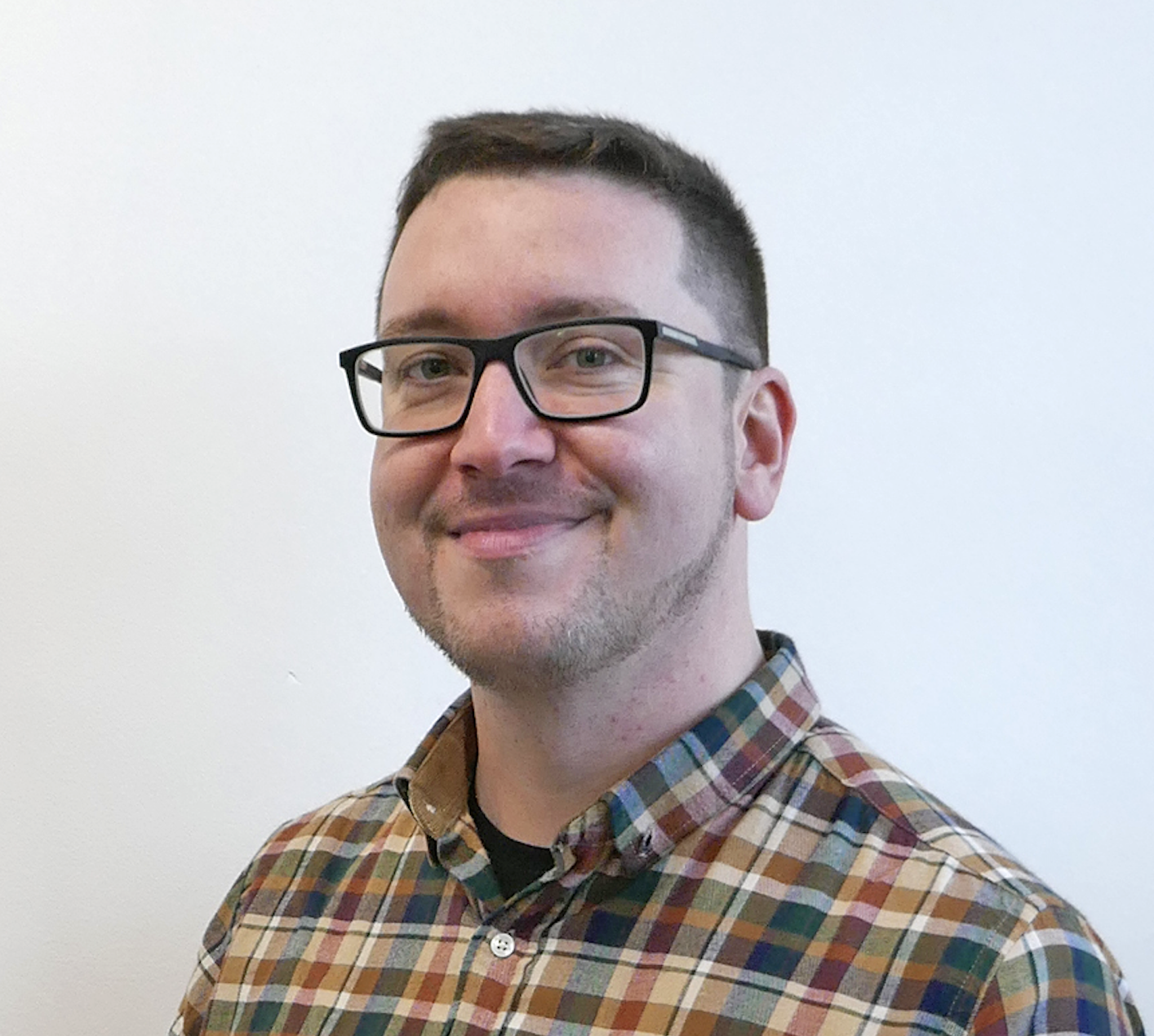
I'm Andy, the Music-Making Ed here at MusicRadar. My work explores both the inner-workings of how music is made, and frequently digs into the history and development of popular music.
Previously the editor of Computer Music, my career has included editing MusicTech magazine and website and writing about music-making and listening for titles such as NME, Classic Pop, Audio Media International, Guitar.com and Uncut.
When I'm not writing about music, I'm making it. I release tracks under the name ALP.